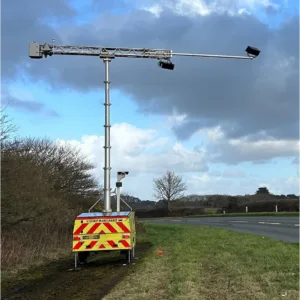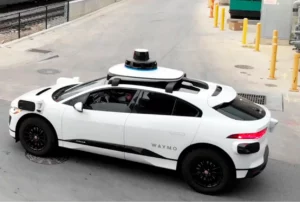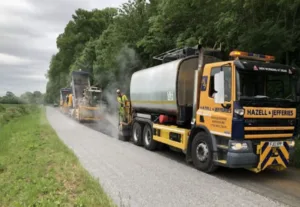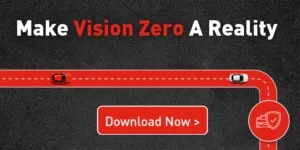By James Haluch, Managing Director, Amey Highways and Chair of the IPV and Incursions Working Group
As a senior leader within the highways industry, I’ve spent much of my career questioning how we protect our people in Impact Protection Vehicles (IPVs) and prevent errant drivers driving into temporary traffic management.
Two challenging issues which can sadly result in life-changing consequences for both road workers and users.
Traffic management incursions occur across the Highways England network with alarming regularity. Between 2015 and 2020, the first Road Investment Strategy period, there were 8,676 incursions recorded. Nearly 50%, 3,581 of these, were reported as road users driving into roadworks trying to seek a “personal benefit”, such as avoiding a diversion route.
It is feasible to assume that every minute of every day, we have a member of our own teams sitting in an IPV, in a live lane, protecting our roadworkers – all signed off by us as part of a formal and agreed Safe System of Work. Yet, statistics indicate an IPV is struck on average every 10 days across the Strategic Road Network.
A sobering thought that we’re waiting for the inevitable to happen regardless of the measures we put in place to prevent a strike or incursion occurring.
Research undertaken by Amey showed that 59% of road users said their safety consciousness was not as high as it should be when negotiating roadworks, while 74% admitted to exceeding speed limits set to protect the roadworkers running those sites-14% admitted to not paying attention to roadworkers.
However, when surveyed, 87% of drivers acknowledged that being a roadworker in the UK is a dangerous occupation. Opposing perceptions which we have to be concerned about – how much are these influencing driver behaviour? Ignoring safety advice, driving without due care and attention or driving recklessly – all potential causes of work-related incidents and fatalities within roadworks.
So what can we do as an industry to make a step change in our approach to managing traffic management incursions and IPV strikes?
The IPV and Incursions Working Group, a sub-group of the Supply Chain Safety Leadership Group, has a vision to eliminate both and deliver Highways England’s Home Safe and Well target of halving the number of vehicle incursions into roadworks by 2025.
One step to do this is by improving the engagement, awareness and competence of those involved in commissioning, designing, planning, managing and carrying out work involving Temporary Traffic Management. Putting a robust, consistent governance strategy in place with common standards and a hierarchy of risk controls to support the entire supply chain community.
To do this, two clear paradigm shifts in safety performance are needed:
· We need to focus on risk controls and challenge the industry to eliminate the need for traffic management entirely. If it is required, then its design and anti-incursion measures should be implemented robustly and consistently that suit the specific location, while positively influencing behaviour to allow drivers to better recognise and understand their personal responsibility through roadworks
· We must remove roadworkers from working in and alongside a live carriageway wherever alternative solutions exist, and where they don’t exist, we must innovate to find them.
The IPV and Incursions Working Group have been focusing on providing a clear support mechanism to achieve these objectives, a Common Intent – which considers four key approaches:
1. Ensure incursion prevention is designed for, through the development of a designer’s flowchart which prioritises the use of established Codes of Practice and Design Guidance such as Chapter 8 of the Traffic Signs Manual.
2. Development of new traffic management installation techniques that eliminate the hazard of approaching traffic through new block techniques.
3. Safe use of Impact Protection Vehicles through the development of end-to-end guidance on specification, inspection, maintenance and usage.
4. A focus on innovation and moving at pace to get pilots to mainstream use as quickly as possible.
In addition to the Common Intent, we’re also launching our latest safety video for IPV drivers which provides guidance on setting up the working environment of an IPV, to support our people to make sure their work space is organised correctly and safely. Highways England Regional Director, Catherine Brookes, said: “On behalf of Highways England I’m delighted to endorse this simple but effective safety video that will help protect IPV drivers operating on the strategic and other road networks. This will undoubtedly support people working on our behalf to get home safe and well.”
We’ve produced the Common Intent and guidance to take best practice used across the industry as well as raise the bar. If we can implement a consistent approach and supporting measures, we will make sure our people and road users are protected, and traffic management incursions and IPV strikes are eliminated. Ultimately achieving our united aim – that everyone goes home safe and well every day.
This article was first published at: www.saferhighways.co.uk

























